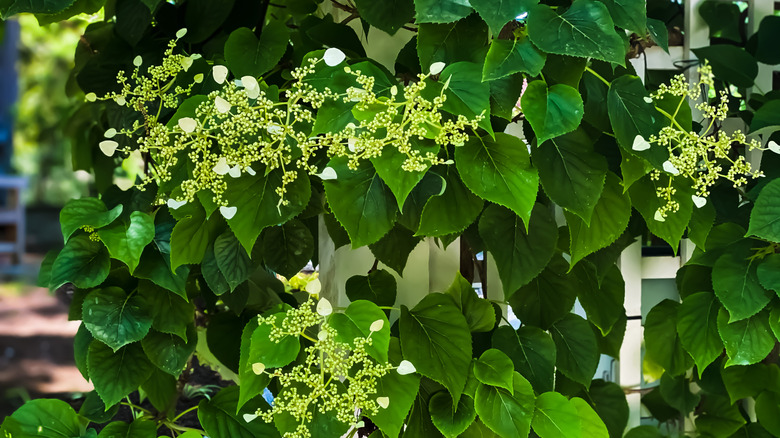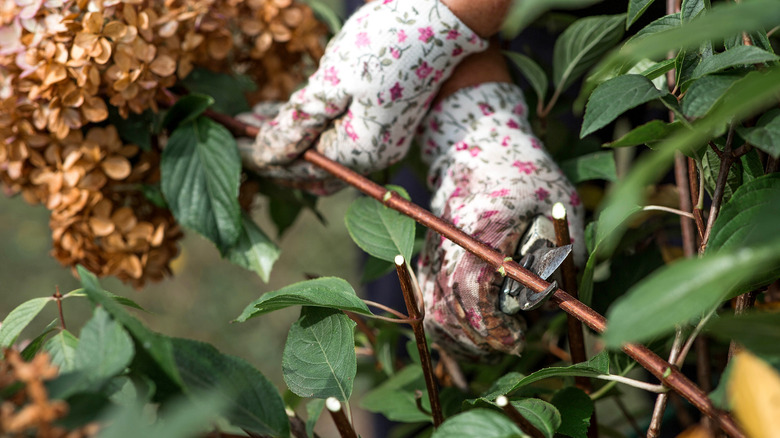Encourage More Blooms From A Climbing Hydrangea Next Spring With This Tip
When it comes to your climbing hydrangea (Hydrangea petolaris), if you want better blooms next spring, then you should get out your shears this fall. Pruning your climbing hydrangea in late summer or early fall could give you more blooms when warm weather returns. There are several varieties of climbing hydrangeas, most being hardy down to USDA Plant Hardiness Zone 4. While pruning them isn't strictly necessary, it can have many benefits.
First off, pruning can encourage the plant to grow more vines, which means more lovely, fragrant white blooms next season. Just wait to do any major pruning until after flowering is done, typically around July. You can encourage more flowers to grow next season by making sure dead or diseased wood is cut back in the early fall. Strategically, pruning climbing hydrangeas will also have an added bonus of keeping them from growing too wild in the garden, which can happen since climbing hydrangeas might reach lengths of 80 feet. Not to mention, cutting away dead vines will help increase airflow that can lessen the chances your plant develops a bacterial or fungal infection.
To properly grow climbing hydrangeas, keep in mind that they prefer slightly alkaline soil that needs to be well-drained. At least four hours of full sun is best for these deciduous vines. The best time to plant them is in cooler weather, either in the fall or spring. They'll do better with support from a trellis or fence.
Prune after blooms have faded
When caring for your climbing hydrangea, never prune too heavily in the spring, or you risk lopping off new buds and ending up with fewer flowers. You're better off not pruning at all instead of doing it too much in the spring. When pruning hydrangeas, always use sharp tools for clean cuts. Keep in mind you shouldn't cut off more than a third of any branch or vine at once. Don't overdo it. Only cut off dead wood or diseased branches, or vines that have overgrown their trellis or become unruly. Now's the time to shape the vines the way you'd like them to be.
Pruning dead branches can encourage new growth and new flowers, but if you're still having trouble with your climbing hydrangea blooming, there could be other issues at play. A late frost might also damage some blooms on your climbing hydrangea. Also, new vines take a long time to get established and flower, between three and five years. So you might just need to be more patient.
If you've let your climbing hydrangea lay flat as ground cover, it won't likely produce many, if any, flowers. That's why you may need to train the vines to get them to grow upward on a support. In order to grow climbing hydrangea on a trellis, it's all about tying vines to certain rungs of the support to guide them to the right spot.

